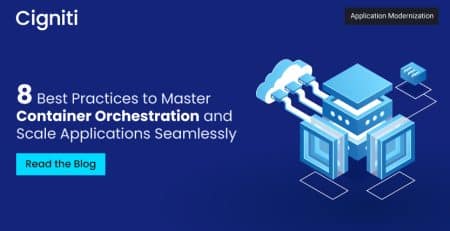Why Site Reliability Engineering is a Key Enabler for Enterprises to Maximize Business Agility?
Agile methodologies are transforming and speeding up the development lifecycle of businesses, but operations are not being changed or speeded up in the same way. While the operations teams frequently struggle to keep up with this pace, it increases operational challenges in the application landscape.
To make the whole IT operation more ‘agile’, it is critical to alter operations to par with how development processes are transformed. This ensures that the landscapes are resilient, performant, and robust. Site Reliability Engineering (SRE) can help achieve this balance.
According to Gartner, the percentage of applications monitored by application
performance monitoring (APM), SRE, and observability solutions in an
enterprise will rise from 20% to 50% by 2027.
SRE is growing in strategic importance for enterprises looking to pursue digital transformation initiatives. With SRE in place, teams can concentrate on creating service-level goals that are directly related to the most crucial KPIs for the organization. Teams may develop the metrics, procedures, and competencies required to enhance service levels and business outcomes using SRE models.
5 Key Principles of SRE Models
Even though the SRE model has been available for more than a decade. several organizations are only now starting to adopt this strategy. The SRE paradigm is emerging as a critical enabler for IT leaders in their struggle to maximize agility. Let us look at the key principles of the SRE model that align with the ultimate goal of delivering an enhanced customer experience. By following these SRE core tenets, organizations can make a positive impact on customers.
1) Introduce customer-centric metrics
Ultimately, SRE models concentrate solely on what matters: the customer experience (CX). Infrastructure and operations (I&O) teams must prioritize CX while working on methods, metrics, and strategies.
Service-level indicators (SLIs) assess how well a customer is taken care of. Latency, throughput, availability, and error rate are examples of common SLIs. Service-level objectives (SLOs) are a goal value or range of values for a service level assessed using an SLI. Teams may gain multiple benefits by using SLIs and SLOs to manage environments, including improved expectation communication between teams, clearer job definitions, and improved effort identification and prioritization. Thanks to these metrics, Teams can design and convey the tasks necessary to prevent SLA violations.
2) Create an error budget
The SRE model serves as a practical link between the ‘fail-fast’ mentality reflected by DevOps and the ‘fail-never’ approach of conventional IT operations. The SRE paradigm incorporates the idea of ‘error budgets’ throughout. A clear SLO-based indicator for how unreliable a service can be is established via an error budget.
Teams decide on a risk level that is acceptable using these error budgets. Teams may create quantifiable and real approaches to balance dependability and innovation velocity through error budgets. Release frequency may rise as long as SLOs are satisfied. Teams may transition from risk aversion to risk management using this strategy.
3) Eliminate toil through automation
Toil is referred to as the tedious or repeated tasks performed by an SRE team. SRE teams automate processes to enhance efficiency and streamline operations. The fundamental idea of reducing labor accelerates pipelines and is essential for scaling systems.
Teams employing SRE models should leverage automation to lessen labor—those high-volume, low-complexity jobs that impede teams.
In domains like infrastructure as code, application release orchestration, testing and validation, continuous integration/continuous delivery (CI/CD) pipelines, and cloud resource orchestration, teams may use automated methods to increase the capacity of their applications and infrastructure.
Operations teams can apply automation to suggest or carry out the corrective actions required to restore services after using machine learning techniques to identify frequent problem patterns. Teams can also automate network traffic monitoring, SLI establishment, SLO reporting, latency and contention metrics analysis, and data collecting for the digital experience.
4) Deploy release engineering
Release engineering refers to distributing software consistently and repeatedly as one of the SRE tenets. Automation should not be used to create a succession of one-time services that cannot be repeated since this adds extra work. Instead, engineers should consistently integrate any improvements they find into operational methods to increase deployment consistency.
Engineers responsible for site reliability, for instance, should develop single-release configurations. Errors will happen, but when the entire team is aware of the root configuration, it becomes easy to find and fix issues. Advantages may also be obtained by implementing automated and continuous testing and enabling quick releases in manageable chunks. The SRE principles encompass any method or technique that enhances release reliability.
5) Bring in simplicity
Simple systems are reliable. The danger and the possibility of failure increase as complexity increases. A straightforward system requires less effort to manage, change, test, and monitor. One of SRE’s objectives is a dull, uninteresting, and routine project timetable.
SRE invests in holistic coherence to strike a compromise between the requirement for more comprehensive operations that can handle the demands of larger projects. Everyone benefits from simplicity and clarity, including various engineers, stakeholders, and customers.
Want to start with SRE?
Site reliability engineering is a development concept that has several advantages for enterprises. In addition to supporting the DevOps attitude characteristic of an integrated development project, the key SRE principles also result in system efficiencies that lead to significant system enhancements.
More significantly, it provides the dependability required to generate positive customer feedback. Because SRE can help any organization, it is unquestionably a well-recognized discipline and method.
Ready to start the journey of adopting SRE principles? Cigniti can help. Visit our Site Reliability Engineering page today.





Leave a Reply